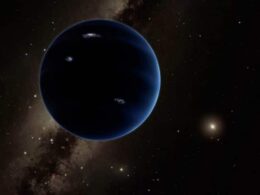Has NASA already found life on Mars?
NASA has found life on Mars but failed to recognise it, a controversial new scientific report claims. An international team looked again at the findings of two spacecraft that landed on the Red Planet 36 years ago.
Sensationally, they conclude that the Viking missions sent back clear evidence for bugs living in the martian soil. Two robotic Viking spacecraft became the first to land on Mars in 1976 and are the only ones to have carried experiments directly to look for life.
One, called the Labeled Release experiment, added nutirents to samples of martian soil, just as a gardener might add plant food to his garden. The soil quickly gave off a large amount of gas, believed to be mainly carbon dioxide. But NASA decided against a biological cause at the time.
Now a team of scientists and mathematicians have carried out a detailed analysis of the data gathered by the experiment and compared it to the results that would be obtained from bug-free soil. They conclude that their findings point to microbes having produced the gas.
Writing in the International Journal of Aeronautical and Space Sciences, the team say: “The only extraterrestrial life detection experiments ever conducted were the three which were components of the 1976 Viking Mission to Mars. Of these, only the Labeled Release experiment obtained a clearly positive response.
“In this experiment 14C radiolabeled nutrient was added to the Mars soil samples. Active soils exhibited rapid, substantial gas release. The gas was probably CO2 and, possibly, other radiocarbon-containing gases.
“We have applied complexity analysis to the Viking LR data… We conclude that the complexity pattern seen in active experiments strongly suggests biology. These analyses support the interpretation that the Viking LR experiment did detect extant microbial life on Mars.”
The team believe they saw a regular pattern, or “circadian rhythms”, in the amount of gas released with an increase during the warmer part of the martian day.
One of the team, biologist Dr Joseph Miller, of the University of Southern California’s Keck School of Medicine, told Discovery News: “On the basis of what we’ve done so far, I’d say I’m 99 per cent sure there’s life there.”
He wants NASA to send a movie camera to Mars to get the conclusive evidence. “The ultimate proof is to take a video of a Martian bacteria. They should send a microscope and watch the bacteria move,” he said.
Speaking to the Futurity website, Dr Miller added: “To paraphrase an old saying, if it looks like a microbe and acts like a microbe, then it probably is a microbe. The presence of circadian rhythmicity and a high degree of mathematical complexity or order in the LR data most likely means Viking discovered microbial life on Mars over 35 years ago.”
One footnote: Rather embarrassingly, if Viking did find Martians, they also boiled them alive because their experiment heated the scooped soil to 160 C.
Update: Skymania has been asked why NASA cooked martian soil, but it was all part of the test that looked for organic material.
Each Viking lander has a robotic arm with a scoop that collected dirt from the surface. One teaspoonful was damped with a rich, partly radioactive nutrient that would be absorbed by any microbes in the soil. The idea was that any such bugs would release carbon into the air and this would be detectable thanks to the radiation.
To help prove that any positive result would be due to biological processes and not just a chemical reaction, other soil samples were brought to high temperatures – or cooked – to sterilise them and kill off any living organisms. This was to see whether the unheated soil behaved any differently from the heated soil.
Scientists were startled to find that the radiation level from the air in the uncooked soil rose quickly. The amount given off from the sterilised sample was much lower. On the face of it, this suggested that they had found Martian life.
But in fact the NASA experts decided the radioactivity was being given off TOO quickly for organisms to be responsible. They also found that when they added further nutrient, there was no further increase in radioactivity, so NASA ruled out a biological explanation.
One of the team that has published the new report is Dr Gil Levin, who was in charge of NASA’s Labelled Release Experiment on the Viking missions. Now in his eighties, he has always been convinced that those landers discovered a bacteria-like life form.
Did life on Earth begin on Mars?
★ Keep up with space news and observing tips. Click here to sign up for alerts to our latest reports. No spam ever – we promise!



